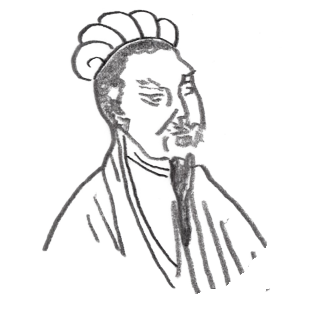
Joseph Edkins released a book in 1873 called Chinese Buddhism. In this book, he dedicated Chapter XXI to Feng Shui. You'll find this chapter below. Due to its publishing date the book is now available in public domain.
CHAPTER XXI.
FENG-SHUI; OR, THE WIND AND WATER SUPERSTITION OF THE CHINESE.
An obstacle to civilisation—Meaning of Feng, "Wind"—Of Shui, "Water"—Use of cyclic characters—Meaning of Lung, "Dragon"—Names of the geomancers—Hindoo nomenclature—Sha-ch‘i "Destructive vapour"—Dark arrow—Chen-wu, or "Protecting shield"—Feng-shui professedly based on the "Book of Changes"—Modern Feng-shui is based on the Han-lung-king—Buddhist element in Feng-shui—The four elements of the Greeks—The Hindoo "Air and water" is Feng-shui—Earth, water, fire, and air are creative forces, existing in successive kalpas, and forming successive worlds—Resemblance to the theories of the Ionian philosophers—Geomancy in the T‘ang dynasty—Rahu and Ketu—The Feng-shui system grew out of Buddhism—Native element in Feng-shui—Nine fancied stars—Causes of the contour of hills and plains—Stars of the six houses—Feng-shuiinconsistent with genuine Confucianism.
EVERYTHING can be made plainer by investigation. Everything can be understood better by the bringing together of facts. The Feng-shui of the Chinese deserves to be examined, for it is one of the great obstacles to the progress of civilisation.
It interferes with commercial enterprise. It checks the efforts of missionary zeal. It interrupts the free thought of the people, and keeps them wrapped in the mummy folds of ancient prejudices.
Within the last thirty years this peculiar system of native Geomancy 1 has been made the ground for refusing the establishment of the electric telegraph at Shanghai, of railways, of a road from Tientsin to the Chai-tang coalmines, and of I do not know how many more manifest and desirable improvements, all which would be of the greatest advantage to the people of the district. I begin with the explanation of terms. Feng, "Wind," is the first which occurs. It may be illustrated in this way.
A grave should not have a hollow near it. The wind will blow into the grave from that hollow and gradually disturb the bones and the coffin. In ten years they will be half turned over. In twenty years or so they may be entirely turned over. In that case the posterity of the dead will suffer by a kind of material necessity. Such a wind is called a wa-feng, from wa, "hollow." An outer wind must not be allowed to invade the chamber of the dead, for fear the family fortunes should be disturbed. Thus the filial piety which takes care of the tombs of parents has a material reward, and may be nothing beyond a coarse selfishness; on the other hand, the want of it is visited by a natural retribution, involving sickness, poverty, loss of descendants, and degradation in the social scale.
The aim of the geomancer is to find a spot where the feng, "cold air which issues from the earth," is hidden. This they call ts‘ang-feng. Where there are no hollows it is safe to dig the grave, for here there is no outlet by which this pernicious wind may disturb the dead.
The second term to be explained is Shui, "Water." The grave must be carefully chosen. The configuration of the earth is caused by the dragon, whose shape is seen in the mountain boundary cast upon the evening sky. The dragon may be traced to its source. It is observable in the flow of the mountain stream, or in the contour of the earth. The hollow river bed and the variety of hill and valley are caused by the dragon. Trace the water of a valley to its source; that is the point from which commences the influence that controls human destiny. Water is the element in which the dragon delights. Its winding shape as it meanders through a plain gives evidence of this, for the dragon prefers crooked paths. Since then the dragon gives prosperity, elevates the king and the sage, and is the symbol of all exaltation, social, political, or moral, it is all important to consider the position of water when selecting the site of the grave. In the valley of the Ming tombs the water flows from the north-west, passes under a bridge in front of the grave of the emperor Yung-lo, and then pursues its way down towards the plain of Peking on the south-east. Hills in horse-shoe form embrace the valley. The feng-shui is good.
If the water flows past a certain point of the geomancer's compass, it causes prosperity; at another, it brings misfortune. If, for instance, to be more particular in detail, the branching point of water be at the north-east, north-west, south-east, or south-west points of the compass, it is possible that there may be prosperity. If it be at the east-north-east, west-south-west, south-south-east, or north-north-west, the elder sons and brothers of the deceased will become scattered and poor. Water at the east by north, west by south, south by east, or north by west points, will ensure happiness to his children, they not being the eldest or youngest. The same children will suffer misfortune if water flow past the north by east and west points.
The chief use of the geomancer's compass is to determine, in regard to the water, the direction of flow, the primary source, the points of junction, and the points from which it starts afresh at a new angle. The grave must be chosen so that the presaged fate, as fixed by the manual of geomancy, may be of the most favourable kind.
The cutting of a new road would alter the course of water, and in various ways affect the calculation of the geomancer; and, as the graves of the past generation are found everywhere, there is no spot where the minds of the people will not be disturbed by projects involving the construction of roads. If the mistake in the selection of a grave site leads to poverty, sudden death, and other calamities, may not a railway cutting, or any disturbance in the course of streams, be equally deleterious? The faith in feng-shui must be first eradicated before the Chinese can be induced to look with favour on railways or any description of new roads. If the government should consent to such improvements, their action ought to be accompanied by edicts and publications authoritatively condemning the superstition, and showing what solid reasons there are for disbelieving the whole system of the geomancers. This would aid greatly in soothing the minds of the hostile and calming the fears of the ignorant.
But to proceed: the water before a tomb must be running water. Riches and rank flow like water capriciously from one point to another. Hence riches and rank are supposed to depend on the undisturbed flow of the stream which passes under the bridge in front of the tomb. Man inhabits the tomb, and his destiny is affected by the surrounding circumstances. Riches and rank are attached to flowing water, and, if due care is taken by the geomancer and by the posterity of the dead, a perpetual stream of worldly honour and wealth may be expected to flow into the possession of the family.
It may be instructive to dwell for a moment on this superstition, proving, as it does, that quite as dense a cloud of ignorance rests on China as upon Europe before it was illumined by the sun of Christianity and of modern knowledge. On the geomancer's compass the twelve cyclic characters, tsu ch‘eu, yin, &c., are inscribed at equal distances interspersed with other cycles. The first, tsu, begins at the north point, and is at the back of the tomb, which faces the south. The order of the words is from east to west, according to the diurnal motion of the sun and stars. Let the observer imagine himself standing at the back of one of those common tombs, which are protected on the north side 1 by a long curved bank overgrown with grass.
Behind him on the horizon is tsu, next on the left is ch‘eu, and so on to the south point, wu. If there is a bend in the course of the water, or a junction of two streams on the north at tsu, the posterity of the occupant of the grave will be thieves if poor, and robbed if rich. If on the northeast they will die young, and be left as widows, and men without children. At the third division, they will be greatly subject to diseases. If the geomancer notices that the bend is in the east point of the horizon, he will be bound to foretell that the posterity of the dead will be vagabonds. At the next two stations the special evils indicated are disobedience and rebellion at the one, and at the other the consequence will be that a snake will grow of itself in the tomb. This is a very bad sign, and presages restlessness for the bones of the dead and the fortunes of the living. It brings the evil wind of unhappy destiny with special force upon the occupier of the tomb. The south indicates that the descendants of the dead will lead licentious lives. Here I stop; but the geomancer does not rest till he has boxed the compass with a variety of evils supposed to befall the possessor of an ill-chosen site for his grave. Such a system is well adapted to increase the authority of the feng-shui sien-sheng, or "geomancer." He must be well skilled in all the indications which the traditions and books of his profession single out as of importance.
These deceivers of their fellow-men who make their living by practising on the superstitious tendencies of t their patrons, are sometimes wanting in care for their reputation. They often carry the thing too far. They are held up to ridicule not uncommonly by the people, and especially because the word feng, "wind," is also identical in sound with feng, "lunatic." The country people ridicule them as they stand on the grave site to make observations, or creep on the ground, or sit on their thighs, or superintend the erection of a mound of grass clods, or come out at evening with a lanthorn to set on the mount, as an assistance to them in considering at a distance the desirable or unfavourable features of the site in question.
Very like is all this to the astrology of the Chaldeans, that system of magic and fortune-telling against which Christianity had to fight in the days of Hippolytus and Origen. The one applied the cycles of astronomy to divination with the object of making gain by telling fortunes. The other makes use of the same cycles in geomancy to obtain money by forefending evil and coaxing a good destiny upon him who pays the conjuror. He will become the most popular and best esteemed geomancer who makes the most cunning observations on the contour of the country and the arrangement of the streams of water at the spot where the grave is, or where it is intended to be made.
It is often the case that the care bestowed by the Chinese on the graves of their ancestors may be less from respect for the deceased than from fear of ill consequences to themselves and their descendants. Large sums are spent by the rich in the hope of obtaining the best possible feng-shui for their ancestral tombs. Thus the stream of prosperity will always flow continuously onwards in the history of their families, securing them freedom from poverty, misery, sickness, and obscurity. The filial piety of China is less sincere than is by many supposed. It is more selfish than generous, more calculating than spontaneous. The moral sense is deadened in this country by the prevailing desire for riches and rank; and the moral retribution which attends the acts of individuals and nations, is too much hidden from view by a superstitious belief in an unintelligent physical retribution, 1 such as is taught by the Buddhists. When God as governor is banished from the world, atheistic philosophers substitute an impersonal Fate, whose decrees sometimes are in harmony with the moral sense in man, but are perhaps much oftener influenced by low motives, such as are believed by the superstitious to control the acts of the fetish. In this sense it may be said that the Chinese have retrograded in proportion as the feng-shui and similar superstitions have extended among them. In the days of Confucius the moral sense was probably brighter than it is now, and there was less of superstition. He lived nearer to the early times of the Old Testament monotheism. Even in his age, if we compare the knowledge of God then possessed by the Chinese with that found in the older classics, we are compelled to admit that there was deterioration. He felt less than the emperors T‘ang and Wen Wang, the influence of the personal idea of God as the actual moral governor of the world. As the faith in a personal God grew dim, the moral sense also lost its keenness, and the physical heaven came to be regarded as an object of worship.
The third word I shall explain is Lung, "Dragon." The word means that which rises and is lofty in location. It is used of mountains and of national or individual prosperity. The fabulous dragon of China is a monster with scales like a crocodile, and having five-clawed feet. He has no wings, and when he rises in the air, it is by a power he is supposed to possess of transforming himself at pleasure. He can make himself large or little, and rise or fall, just as he chooses. The Chinese dragon, which is a flying saurian, is not like the Greek dragon, which belonged to the serpent family, but seems to be an original Chinese creation, or is connected in some ancient and unknown way with the West. For our present purpose it is sufficient to regard it as purely native, and the most probable cause I can name of the attributes of the dragon is similarity of sound with words meaning "high" and "ascend." Among the words with which it may be identified by etymology, through the mutations of letters, are shang, "to ascend;" cheng, "the upward motion of steam;" teng, "to go up;" sheng, also "to go up;" lung," high;" and lung, "hill." The geomancer calls all high land lung, and all low land shui. The dragon rules the high land, and water the low land. The chains of hills which almost encircle Peking are the protecting dragon, which is believed to ensure its prosperity. The hills which surround in a similar way the Ming tombs are the dragon, which for three centuries protected that dynasty. The mountain chains which bound the province of Chi-li are connected with the Manchurian mountains which cradled the imperial family in the days of its comparative obscurity. As the seat of empire is in Peking, and it is there the reigning family resides, it is of the highest importance not to disturb its protecting dragon. On plains the Chinese make a long mound behind a tomb. This is also the protecting dragon of that tomb and of the family it represents. It is called the hill, and its office is to keep off the north wind. When high land is wanting, trees make an excellent shield against bad influence. 1
The geomancer's books say that the dragon follows the course of the water. He originates his influence where the water takes its beginning, and remains permanently where two streams meet. They mean here the influence which produces happiness and misery by a capricious retribution mixed with a coarse natural philosophy. Divine Providence is here kept out of view, and is by implication denied. The elements—fire, air, earth, and water—dominate. It is by their combinations and activities that human fate is determined. The geomancer's dragon causes men's elevation, longevity, and riches; and his influence varies according as he has more of water, or of earth, or of any other element. The course of the dragon must be in each instance examined, and it is decided by the direction of the water. But the contour of the ground, whether rising or falling, high or low, must also be considered. Such investigations were made, for example, in regard to the site of the grave of the emperor Yung-lo, and hence the selection of that beautiful valley where the Ming emperors are buried. The Manchu emperors afterwards despoiled the tombs of that dynasty. Much of the teak timber and marble was brought away to use in the new edifices of Yuen-ming-yuen and the other pleasure grounds of the imperial family. Then they began to fear the consequences on themselves and their descendants. The influence from the Ming tombs on the north might have a disastrous effect upon them while enjoying their summer retirement. They therefore erected those geomantic walls which are seen on the hill sides facing north-north-east on the way to Hei-lung-t‘an from Peking. These walls, it was supposed, would check the pernicious influences which might otherwise strike them from the invisible retributive power, which was still supposed to watch over the last resting-place of the once mighty dynasty of the Ming.
It is plain that the geomancer's capricious retribution, if believed in by a nation, must have most injurious consequences in its manifest interference with the doctrine of moral retribution. It is of a piece with the luck of the Chinese calendar, the belief in the efficacy of red colour and favourite moral sentences in keeping off demons, the choice of days for marriages and funerals, and the remainder of the endless list of native superstitions still believed in in this country.
In describing the effect of the dragon, the geomancers say he can remove the "spirit of death," the sha-ch‘i, and preserve life. The shais a malicious principle, the shed of the Hebrew and Arabic languages, and the ch‘itgur of the Mongols. When this principle invades the body, man dies. They believe, however, that this enemy who kills and injures men is not invincible. The dragon has the power of checking it. It is curious to notice that here we have to do with impersonal yet living principles. The sha does not receive a proper name. In a Western country these superstitions would have been clothed in the language of a graceful mythology. The Chinese, belonging altogether to a more primitive and prosaic type than the Greek race, are content with simply calling them good and evil principles.
I shall now say a few words on the professional names assumed by the geomancers. They call themselves professors of ti-li, "the doctrine or description of the earth," "geography." This name is in contrast with tien-wen, "astronomy," which means the description of heaven astronomically and astrologically, as ti-li geographically and geomantically is of earth.
What astrology is when compared with astronomy, such is geomancy when compared with geography. The astrological section in the geomancer's books is bulky. They tell us that the stars shining down (or coming down, for they suppose them movable) give the mountains their form. Some adopt the Hindoo nomenclature, and make the Sumeru mountain the centre of the mountain and river system of the world. Others, who object to offer su great a concession to the foreign doctrine of Buddhist books, prefer to assign this honour to Kwun-lun, the old Chinese name of the mountains dividing Thibet from Tartary. On the north side of these mountains, the Chinese probably resided for a time before proceeding to take possession of their present home, and the same chain has always taken a prominent place in their notions of geography. It is the backbone from which the other mountain chains proceed, and they form together a kind of terrestrial skeleton. The rivers form the veins and arteries, and the mountains the bones, of a living earth. The whole is imagined to be so like the heavens, that certain stars correspond to certain terrestrial spaces, and exercise rule over them. Kwun-lun rules the hills, as the Pole star rules the stars. When the geomancer takes his position to inspect a site for a grave, house, or city, he fixes upon a spot which is called hiue, a name that may be translated into English by, what are indeed possibly, its etymological equivalents, "hole" or "hollow." The windings of the surface in its neighbourhood, whether stone, sand, or loam, extending all round until the view is bounded by hills or the horizon, constitute the constellations which encircle it as the stars do the pole. As in heaven, the twenty-eight zodiacal groups represent the Blue dragon in the east, the Red bird in the south, the White tiger in the west, and the Black warrior in the north, so it is supposed to be in the limited horizon of which the centre is the required site. It is in accordance with this system, half astrological and half geomantic, that the professor of ti-li proceeds in searching for what he calls the "true dragon" in each case.
The expression k’an-yü is also used. This is a favourite name on the signboards of Peking geomancers. The best explanation of this phrase seems to be that which represents k‘an as "heaven," yü as "earth." K‘an is the covering let down over an idol, as in the phraseFo-k‘an, "A shrine for Buddha," and it here represents the sky as a canopy stretched over the world. Yü is the "chariot" in which man is borne. It is not so well known as it should be, that in China in the Han dynasty a gleam of true light shone on the minds of some of the literati in regard to the system of the world. They accepted the noble idea, probably propagated from the West through Central Asia, that the earth moves, while the heavens are at rest. Pythagoras, if this be true, had disciples even so far away as China. It is possible that the phrase k‘an-yü may hint at this idea. Hence the application of the yü, "chariot," to geography and the earth.
Another term requiring explanation is sha-ch‘i. It is this which is feared when a ying-pei, or "shield wall," is erected before a house door. The dangerous vapour known as sha-ch‘i, causing various calamities, might enter by an unprotected door. Every house entrance in Peking has its devices for preventing straight access. The path must wind, and many methods are employed to save the house from the unwelcome intrusion. But there may be some confusion here; for the idea of a winding entrance to a house arises from the desire to keep men at a distance, as well as demons, and to make a limit between what is public and what is private.
The "secret arrow," an-tsien, is a name given to evil influences coming by a small lane in front of a door, or the lane itself is so called. To oppose the bad influences travelling along a lane towards an open door, a stone lion on a pillar, carved with characters indicating the capability of resistance, is placed opposite the entrance, and it is thought to be so useful that nearly every lane in Peking is thus defended. This and similar "protecting shields" are termed chen-wu. Some Buddhist structures are built to act as chen-wu. Such are pagodas and temples. In the same way operate inscriptions and tigers cut in paper. It is usual to carve stone pillars employed as chen-wu with the words Tai-shah-shï-kan-tang, because T‘ai-shan is the most honourable of mountains, and mountains are a protecting shield to buildings and graves. The carving of the above sentence (meaning, "This stone from T‘ai-shan dares to resist") is supposed to constitute a sufficient barrier.
Among other things that should not be opposite to a house door are a well, a grindstone, the corner of a wall, a temple, two streets crossing, and the entrance to a lane.
Among things that protect a house and its inmates is a little image of Kwan-ti, god of war, erected on the roof. A stone arrow is also employed for a similar purpose. It is believed to be a defence against the "dark arrow" of the malignant demon.
Among inscriptions over a door of great efficacy is one in honour of Kiang T‘ai-kung, a hero of the Chen dynasty—"Kiang T‘ai-kung is here; there is then no fear," Kiang-t‘ai-kung-tsai-tsï-pe-wu-king-kü.
To have a temple behind a house is a most favourable sign. To be on the east side is also lucky. But to be on the west is bad, and on the north worse. Yang-chai, yin-chai, the "light house and dark house," each has its feng-shui.
In regard to the origin and history of feng-shui, a few notes here appended may be found useful in the absence of minute information on an obscure subject.
It professes to be based on the Yi-king, where a rude system of nature is traced by means of a cycle of eight elements, including heaven, earth, mountains, lakes, thunder, &c. On this are founded methods for seeking good fortune and avoiding ill. On account of its classical authority and repute, every fortune-teller naturally claims that his rules find their origin here.
The real feng-shui of the present generation is, however, to be found rather in the Han-lung-king and such works which are of modern date. The name of this treatise means the "Book for shaking the Dragon." It is of the last century.
It is a system which has been in course of formation since the Han dynasty, and has in it Buddhist, Tauist, and Confucian elements, or, as it should rather be stated, Buddhist and native.
Let us begin with the Buddhist. The very name feng-shui has in it a tinge of Hindoo notions. The Buddhist Hindoos in China taught the Indian natural philosophy. Their elements were four, namely:—ti, "earth;" shui, "water;" hwo, "fire;" feng, "air." As these agree with the Greek doctrine of physics, we may perhaps ascribe its origin to Greece or rather to Babylon, that great centre of ancient civilisation which deserved still more than Egypt to be called "Mother of the sciences."
Writers on India tell us that the natives of that country, when they speak of climate, always call it "air and water." 1 Since then the Chinese word feng, "wind," was used by them for air, one of the four elements, it is highly probable that the Hindoo physics have something to do with the origin of the name by which the Chinese geomantic doctrine is known.
To illustrate the way in which the old Hindoo philosophers discoursed on the elements, I shall here mention 1 that they speak of white clouds as having in them more of the element of earth, of black clouds as having more of water, of red as having more of fire, and of yellow as having more of air.
Thunder they believe to be caused by the meeting in the clouds of the wind area with the water area, of the wind area with the earth area, and of the wind area with the fire area.
Calamities caused by wind, fire, and water have local limits in the Buddhist universe. Thus fire works destruction no higher than to the paradise called Kwang-yin t‘ien, "The heaven of brightness and sound." 2 So also with the other elements, each has its sphere and its period of efficiency. The kalpas are terminated by one or other of these powerful elemental forces. By their interaction the world is formed, changed, destroyed, and renewed. It was under the influence of such a philosophy that Milton said (for in his time the Greek doctrine of the elements was still undisturbed in Europe) -
"Air, and ye elements the eldest birth
Of nature's womb, that in quaternion run,
Perpetual circle multiform, and mix
And nourish all things, let your ceaseless change
Vary to your great Maker still new praise."
The heaven of Brahma is said to have been formed by wind blowing on water, in which grew up of itself a vast mass of moist matter. On this again the wind blew, and out of it formed the palace of Brahma, which exhibited in abundance the most beautiful combinations of the precious metals and stones of every kind known to man.
The sea is said to have been formed by the mighty winds of heaven blowing upon the earth till they dug in it a vast hollow. In this was placed an immense collection of water, which settled itself in its bed and became the ocean.
Here the wind is seen as a great creating agency. An impersonal actor is the aspect in which each of the four elements is regarded by the Hindoo philosophy of nature. This accords well with the superficial view of natural phenomena taken by the Eastern Asiatic mind. The Semite and the believer in the Bible view the events of creation and of universal nature as caused by God. Science comes into the field of nature, and finds out what are the second causes operating to produce observed phenomena. The Christian believer, when convinced of their truth, accepts the results of science as safe and genuine additions to our knowledge, and as harmonising with the teachings of religion. With the Eastern Asiatics it is different. The elemental philosophy of the ancient Hindoos could not be scientific, nor could it base its system of nature on a series of patient observations. It was not in the capacity of the Hindoo to undertake such inquiries. He was content, then, to imagine where he could not discover. He therefore willingly adopted that view of nature—probably in its origin Greek, and ultimately Babylonian—which made of the four elements as many active powers controlled in their working, not by a conscious will, but by a blind yet retributive necessity.
It is interesting to note the resemblances between the Hindoo physical system of the world and that of the Ionian philosophers. Thales of Miletus, who lived B.C. 600, held that water is the origin of things. Out of water everything is derived, and to it everything ultimately returns. Heraclitus of Ephesus believed the one principle which underlies all phenomena to be fire. The world is formed, he taught, by evolution from fire; not made by God or by man. This fire is a rational intelligence controlling the universe. It also is the human soul. Anaximenes said that the physical principle which originates nature is air, and all the elements may be resolved into this. Air made dense gave birth to the earth, and from the earth were formed the heavenly bodies. The air acts by motion impressed on it from eternity, causing in it alternate rarefaction and compression. This air he thought to be eternal. Anaximander of Miletus was a friend of Thales. He held the elements of the world to be simple and unchangeable, and taught that they formed all things by concurrence with homogeneous particles already existing. 1
Let it be observed that all these philosophers regarded matter as the cause of all things. They lived two centuries before Anaxagoras, Socrates, Plato, and Aristotle, who extended their inquiries into the world of mind, and taught a system in which either mind in the abstract, or God, was regarded as the source of the world.
No more do they resemble Pythagoras, who, living early enough to be the contemporary of some of them, formed a system of his own based on numbers. The secret soul of the world which causes its various phenomena is a principle of harmony.
Zeno, founder of the Stoics, coming after Socrates and Plato, went hack to that principle of the Ionian philosophy which finds the origin of the universe in physical elements. The universe, he said, comes into being when the primary substance passes from the state of fire into that of air, then takes the form of water, and finally throws off both its thick portions to become earth, and its rarer parts to become air, afterwards fire. He also held with Heraclitus and with the Hindoos, that the world passes through successive periods of decay and reformation, that is to say, the Indian kalpas.
There does not seem much danger, then, in ascribing the Hindoo philosophy of the elements to the Ionian school for its germ. The effect of Alexander's conquest was felt in India in new views communicated on mathematics, astronomy, architecture, and physics. Hence we learn why the doctrine of the four elements was so extensively taught by the Buddhists in Chinese literature of that religion.
According to this view, the feng-shui of the Chinese may be traced to the early Greek philosophy as one of its causes. During the three centuries before the birth of Christ the region of the Punjab was ruled for a long period by Greek kings, and it was here that many of the Buddhist books were written. Some of the most prolific writers of this religion resided in the Punjab and its neighbourhood during the Greek domination over Persia, Parthia, Bactria, and a part of North-western India. What wonder if they proceeded to supplement their system by the materialistic philosophy of the Ionians? They were pleased with a cosmogony which had no recourse to the doctrine of a Creator.
The following account of what took place in the eighth century will illustrate the influence of Buddhism on the geomancy of that time. Sü Kien, an official of high rank, when about to bury his wife, inquired of a friend how he should construct the grave with regard to its mound and limits. His friend told him of a Buddhist priest of the city of Hwang-cheu, who knew how to connect the affairs of men with those of demons and spirits. The grave should be deep and narrow; deep for darkness, and narrow for security. Below the surface twelve feet is the limit of earth, and eleven feet lower is the commencement of water. The earth and water regions have each a dragon to take care of them. The dragon reveals himself in the one case in six years, in the other case in twelve. If a trench be of ordinary limits, the spirit's path is not tranquil. The grave should therefore be twenty-four feet deep. Instead of lime-plaster, use starch. Do not place earthenware pitchers in the tomb, because they are allied to the element of fire. Do not place gold in the tomb, lest it should become an elf. Do not place orpiment or arsenic in the tomb, because they are hot by nature. Let the grass and trees on the tomb be withered and not fresh.
Melt iron into the shape of cows and pigs; they will keep the two dragons in subjection. Smooth and clean jade-stone has the power to harmonise the hundred spirits of nature. Place it in the tomb to illuminate the path of the spirits.
As a further proof of Hindoo influence on the Chinese mind in the formation of the circle of ideas known as the feng-shui, t‘ien-wen, and ti-li, may be mentioned the names Rahu 1 and Ketu, to denote the genius of the ascending and descending nodes of the moon's orbit. Also the use of the triangle, connecting three points of the horizon a hundred and twenty degrees apart, in casting the horoscope is common to China and India. Then also from the mention in books of geomancy of the Sumeru mountain as the centre of the world, it is evident that they have borrowed from India.
It was for such portions of Buddhist teaching that the Chinese mind had a special affinity. The Chinese are fond of materialism. As Shakyamuni taught Buddhism, it was an ascetic morality. His followers soon gave it a decidedly metaphysical cast. Then followed the materialistic phase, when magic, astrology, and geomancy were developed. The Hindoo Buddhists who taught in China brought with them the whole educational system of their time. In it was included much belonging to the three branches of superstition just mentioned.
In accordance with this view feng-shui as now believed is a very modern thing, and subsequent to the spread in the country of Hindoo thought. The mixing of Indian with Chinese ideas produced both the Sung philosophy 2 and the modern feng-shui, which has been chiefly developed in the present dynasty.
I now proceed to the native element in the feng-shui. This may be made, so far as it is physical, to include astrology and the doctrine of starry influences and the elements as taught in the native Chinese literature. The nine fancied stars which move about in the air, and are either lucky or malignant according to circumstances, must here be referred to. They form an extensive portion of the geomancer's system of follies. All this may be described as the Tauist part of the feng-shui.
After this a few words must be added respecting the moral or Confucian element in the feng-shui, and the effect of the example of distinguished Confucianists in encouraging popular superstition on this subject.
After a brief allusion to the north star and the chief northern constellations, the writer of the work called Han-lung-king goes on to describe minutely the influence of the nine stars, or influences, which move through the atmosphere and cause prosperity and adversity to men.
The first is Tan-lang, "Covetous wolf." It has twelve characteristics. Of these five are lucky and seven unlucky. The lucky are pointed, round, flat, straight, and small. The unlucky are not in the middle, crooked, one-sided, precipitous, turned over, broken, and empty. The pointed is shaped like a bamboo sprout. The round is complete on all sides. The flat is perfectly level like a lying silkworm. The straight indicates absence of one-sidedness. The other characteristics are the appearance of being ready to fall over, the presentation of a precipitous cliff, of the breaking off of a watercourse, hollowing into caves, and so on.
Diagrams in accordance with these indications are given of neighbouring hills which are supposed to exert a corresponding influence on a grave according to their shape. The writer adds in the rough poetry of books such as this, "Men say the covetous wolf is good, not knowing that pure and chaste desires are still more important. With all the advantages derivable from the covetous wolf, without pureness and honour, no person, even if he acquired rank, would attain to the three highest, anciently known as the San-kung." The prevailing element is wood.
Looking at the diagram only, the reader sees a conical hill or elevation, a mushroom shaped outline, and a series of four or five conical hills presented in half profile. These appearances all prove the presence of the "covetous wolf."
The second moving star is Chü-men," Great door." The form loved by this spirit is flat at the top and square on the sides. When a hill presents the appearance of a square or trapezium with the upper line horizontal, the phenomenon is caused by the presence of this influence. Wood is the prevailing element.
The third star is Lu-tsun, "Rank preserved." Nine shapes in hills mark its presence. Its favourite shape has a flat top, a cylindrical body like a drum, and at the bottom it spreads into five branches like the toes of the human feet. Properly it should be a malignant star, because its shape partakes of a spotted and mixed nature. But it is able to adapt itself to conditions which secure good luck. It causes men to attain the lower ranks of promotion, such as the chief magistracy of cities of the second and third ranks, and, in certain circumstances, gives the control of troops or of literary examinations. The five-toed appearance is represented in the map as sometimes three or four toed. There are also other modifications. Earth is the ruling element.
The fourth star, Wen-chü, "Literary windings," belongs to the element of water. It loves the shape of the snake when seen moving with three or four bends of the body. The "Men of the Dragon," Lung-kia, as the geomancers call themselves, can detect the presence of this influence in the contour of hills. It has, like the other stars, a normal and several occasional shapes. When thin, it is the snake proper; if thicker, it is a caterpillar; if still wider, it becomes a cast net. The geomancers profess to attend to the points of bending in the snake, because these indicate the line of water-flow and of the dragon's influence.
The fifth star is Lien-cheng, "Purity and uprightness." Its element is fire. The ancients highly valued it, says the manual, and called it Red flag and "Brilliant vapour," Yau-k‘i. It likes a lofty position, rugged heights, umbrella folds, and the shape of a flattened ball. One form it assumes is that of the "Dragon tower," Lung-leu, which is a conical elevation, overtopping all beside it. Another is that of the "Palace of precious things," Pau-tien, in forming which several cones of equal height are seen in parallel rows. The imaginations of the geomancers lead them also to fancy the appearance in rocky outline of the tortoise and the serpent guarding some little mountain gorge. This is considered to be an indication of the best kind of dragon influence, for here passes some water channel.
The sixth star is Wu-chü, "Military windings." Its element is metal. It is round at the top and broad at the bottom, like a bell or an inverted cooking-pan. In judging of the hill shapes that belong to this star, it is easy to mistake the demon for the dragon. This is specially the case when the shape observed is that of an inverted spoon, the spoon being like the tail of the Great Bear, or rather the "Seven stars," usually called Pe-teu, in their entireness. The demon and the dragon are both in the habit of assuming the shape of an inverted "dust-pan" (ki), an inverted "spoon" (sho), and an inverted "palm," chang (palm of the hand). The skill of the geomancer is displayed in distinguishing the appearances. The demon may affect any one of the nine stars; and, as there is the fourfold form, square, round, crooked, and straight, there may be thirty-six shapes to be considered. Generally speaking the locality of the demon is behind the "grave site" (hiue), and the corresponding genius in front of it is called kwan, "officer." If the demon and the genius of office look at the tomb site, it is a lucky sign. If they turn their backs to it, the dragon of prosperity will not take up his place there.
The seventh star, Po-kiun, "Breaker of the phalanx," is referred to metal. It has one normal and four peculiar shapes. The normal shape is that of three round-headed cones, seen one rising above another like the folds of a flag when carried by a person walking. Below it has ugly-looking points like spear points. Persons seeing these conclude too hastily that this star is malignant and unlucky. It is so, but in certain circumstances it may become highly serviceable for acquiring riches and rank. Consider what stars it corresponds to in the sky. Its power is formed by the descending influence of the "Three terraces," San-t‘ai, three pairs of stars in our Great Bear. Upon high hills the celestial essence of these stars collects, and becomes formed into six terrestrial or atmospheric stars, called Lu-fu, the "Six palaces." They are all mingled with the influences of the five elements.
STARS OF THE SIX HOUSES.
|
|
Shape.
|
Element.
|
Name.
|
|
1.
|
Round
|
Metal
|
T‘ai-yang, "Great light"
|
|
2.
|
Oblong, round
|
Metal
|
T‘ai-yin, "Lesser light."
|
|
3.
|
Round head, long body
|
Wood
|
Tsï-k‘i, "Purple vapour."
|
|
4.
|
Alive, crooked, moving
|
Water
|
Yue-pu, "Moon disturber."
|
|
5.
|
Square
|
Earth
|
Ki, "Plan."
|
|
6.
|
Conical
|
Fire
|
Lo, "Net."
|
The eighth star, Tso-fu, "Left assistant," is under the influence of the element of metal. Its normal shape is that of a head with a napkin wrapped round it, in front high, behind low. This star is a servant to the great dragon, who gives shape to the constellations of astronomy. Fu (the eighth) and Pi are two stars seen near α in Hercules, called by the Chinese Ti-tso, "Emperor's throne," and by European astronomers, Ras Algethi. On account of their proximity to the throne, it is assumed that these stars confer honour on men by their influence if happily directed.
The ninth star, Yeu-pi, "Right assistant," has no fixed shape. Its element is water. Flatness is its favourite characteristic. Where hills break off and give place to the plain, it loves to be. It rules even surfaces. It is therefore called Yin-yau, "Hidden glory." It is also fond of narrow threads and dim vestiges of things. The snake creeping through grass, the fish leaping on sand, the spider's thread, the traces of horses' hoofs, and the strings of the lyre are presided over by this star. It likes that which is half real and half unreal, and which is scarcely visible to the eye. The aid of this star is said to be particularly valuable in cases of doubtful feng-shui. The unskilled geomancer will say, "This is a level plain, I can make nothing of it; I need some elevation to guide me in the diagnosis of the neighbourhood." He forgets that water flows not only down a hill but even on a plain, and that there is a difference of level there. One inch is enough for the true "discerner of the dragon." Or the tyro in the mysteries of the feng-shui folly may say, "This ground is wet. The fault is fatal. You must not bury your dead here." Fool that he is, he perceives not that to decide so hastily is most unwise. Does not the wetness come from an unusual flow of water? When the water disappears, this place will be soon as dry as those which are higher. The Right assistant loves this state of doubt, and hence the differences in opinion between geomancers respecting the characteristics of the same spot or region.
It may be said generally in regard to the nine stellar influences that, when seeking for a lucky hollow, you find, for example, here the appearance of a breast, there of a swallow's nest, here a ploughshare, there a comb, here the turned-up hand, there the spear or lance, and there a hanging lanthorn; these effects of starry influence point out the true nature of the desired "hollow" (hiue). The dragon makes the hollow, and in seeking it the correct indications of the dragon's action must be followed.
It would be of little use to follow the Chinese geomancers further into the lucky and unlucky effects of these stars, their division of hills into "male" (hiung) and "female" (ts‘ï), into "patriarch" (tsu) and "small hills" (siau-feng), and into "branches" (chï) and "stems" (kan). Enough has been said.
This whole doctrine of starry influences may be readily traced back to the system of the Tauists in the Han period. Hwai An-tsï, Wei Pe-yang, Pau Po-tsï, and others, taught just such a philosophy of nature as might give origin to the more modern views of the geomancers. Astrology and alchemy were then in their glory. The former of these influenced geomancy and encouraged popular belief in moving starry influences. From whence came that astrology? The answer should be from Western Asia and India, but full data on this point are wanting. Not only the imaginary stars of the geomancers must be traced to the Han period, but all those star genii and demons of the imperial calendar which are popularly believed to be in perpetual movement in people's houses, in streets, and in the air, may be assigned to the same origin. It was then that the habit began in China of regarding the stars as movable beings regulating the affairs of kingdoms, cities, and individuals. Though the names of the nine stars are new, they are identified by the geomancers with the seven stars of the Great Bear and two neighbouring stars. They move up and down in the ether of space, and are either visible as individual stars, or, if invisible, traverse the world each with an elemental force of its own, to give form, character, and vigour to those parts of nature to which they attach themselves.
The remaining element in feng-shui which now comes to be considered is moral. The choice of a grave is to be made in accordance with the rules of geomancy, because filial piety requires it, and it is sanctioned, it is said, by the example of the sages.
To prove, however, that Confucius himself believed at all in any of the nonsense connected with geomancy is very difficult. It is said in the biography of the sage by Sï-ma Chien that, not knowing where his father's grave was, he inquired of the mother of a friend. Learning from her the locality, he buried his mother there. In the Li-ki it is said of Confucius that he was at first unwilling to make a mound over the grave, because the ancients did not. At last he consented to carry out the suggestion, but the person left in charge of this duty soon came to the sage to announce in an agitated manner that rain had fallen and reduced the mound to a level. Confucius regretted that he had allowed himself to depart from primitive simplicity. These little incidents seem to show that he had no notion of geomancy, and that he loved simplicity.
In early times it was enough for emperors to be buried on high mountains under a large mound, while feudatory princes were content with hillocks, and the common people found their last resting-place in the plain. There was no thought then of the course of water flowing past the tomb.
An ancient said, "I have been of no benefit to mankind while living. Let me not injure them when I am dead. Choose my burying place where the earth yields no food for man." Others have said, "If a man dies on the hills, let him be buried on the hills. If he dies in the lowlands, let him be buried in the lowlands." This was said with a view to economy. It would be a useless expense to convey the body to a distance. For the same reason another noted person of the Han period ordered his son to bury him without a coffin in a grave dug in the ground. In the T‘ang dynasty a high officer gave directions that he should be buried in a plain manner, without monument or stone of any kind, and over his grave the villagers were to be allowed to plough and sow as of old.
Such dying instructions as these have been carefully preserved by the Chinese literati, who felt that they were more in accordance with true wisdom than the follies which afterwards grew into vogue. They show the proper standpoint of the genuine Confucianist. With him everything must give way to moral considerations.
In arguing against feng-shui and the other superstitions of the Chinese, we ought to find on this ground a fast friend in the true follower of Confucius. The freedom of Confucius from superstition is one of the best proofs of the greatness of his mind, and a main cause of his ascendancy over the literary class. His utterances on the danger of excessive reverence to the kwei-shen have been a barrier against Buddhism, and prevented the extension of its soporific influence over the whole nation. The literati have thus been kept in an independent and self-sustained position, and have not become quite overwhelmed by this intrusive foreign element. Hence, the scions of scholarly families and students who have read extensively are trained in a school of ideas antagonistic to superstition. These men, therefore, may be appealed to in aid of our opposition to the feng-shui. They are ashamed of it. They disown it if brought in argument to close quarters. They only comply with it from an unwillingness to act contrary to custom. The great minds among them avoid even the appearance of compliance, but these are not many.
Considering that the enlightened Chinese are thus disposed, there could be no harm done by a studied attack on the whole system of geomancy in a book prepared for the purpose. It would not be offensive to the true Confucianist, and it would afford opportunity to teach much good philosophy and truer views of nature than those to which they have been accustomed. But perhaps the whole structure is so flimsy that it will fall of itself, without laying siege to it or directing the ordnance of argument against it. The shining of true science may pale its ineffectual fire, and cause it to disappear as a thing of darkness, without special effort to bring about its extinction.
Footnotes
327:1 Geomancy is properly divination by means of lines or points drawn on the earth. The Chinese feng-shui may be called "geomancy," because it divines by means of lines noticed in the shape of streams and hills.
330:1 In Southern China this bank is carried around the north, east, and west sides.
332:1 This is the karma, which is essential to the Buddhist metempsychosis.
334:1 See Essay by Rev. Dr. Yates.
339:1 See Sir James Martin's Influence of Tropical Climates on Europeans.
340:1 Fa-yuen-chu-lin, chap. iv. This work is a Buddhist cyclopædia of the T‘ang dynasty.
340:2 Fa-yuen-chu-lin, chap. i.
342:1 Smith's Dictionary of Greek and Roman biography and Mythology.
344:1 In Chinese, Lo-heu for La-hu. The twenty-eight constellations of the Chinese zodiac were identified with the HindooNakshatras in the Han dynasty.
344:2 It would be interesting to trace the effect of Greek and Indian materialistic philosophy on the formation of the modern Chinese cosmogony. It is not uncommon for doctrines to be attributed to the Chinese as a nation which only belong to a particular modern sect of the literati. While some writers attack the Chinese for beliefs which they do not hold, such an examination of the modern native philosophy might prove useful.


 The Fèng Huáng or also called red phoenix is also an integral part of the four animals of Feng Shui Form School.
The Fèng Huáng or also called red phoenix is also an integral part of the four animals of Feng Shui Form School.  Within Chinese Mythology the tiger is calm and reserved. The tiger is a Yang animal with strong Yin attributes, which is why it resembles Yin energy.
Within Chinese Mythology the tiger is calm and reserved. The tiger is a Yang animal with strong Yin attributes, which is why it resembles Yin energy. The turtle is the animal with the highest meaning in Asian countries. The animal stands for longevity, long life, consistency, strength, durability and wisdom.
The turtle is the animal with the highest meaning in Asian countries. The animal stands for longevity, long life, consistency, strength, durability and wisdom.








 When you clear clutter you are not just clearing out old unwanted material things but you are actually de-cluttering your mind.
When you clear clutter you are not just clearing out old unwanted material things but you are actually de-cluttering your mind.
 For many others antiques are standing for a time long gone, for a more homely style that they so miss in modern furniture design. And for others yet it is a way of investing money.
For many others antiques are standing for a time long gone, for a more homely style that they so miss in modern furniture design. And for others yet it is a way of investing money.

 If you then turn your attention not just to the outside but also inside, you will notice piled up thoughts, reactions and attitudes that have a negative touch to it: negative thoughts, prejudices, the tired way you look at your work or your friend- and relationships and worst of all you notice that you have let yourself regenerate into a state of boredom, of inaction, of exhaustion and possibly even a depression.
If you then turn your attention not just to the outside but also inside, you will notice piled up thoughts, reactions and attitudes that have a negative touch to it: negative thoughts, prejudices, the tired way you look at your work or your friend- and relationships and worst of all you notice that you have let yourself regenerate into a state of boredom, of inaction, of exhaustion and possibly even a depression. Over time we will create a small line of articles highlighting the one or other method. To give you a head-start however, why don't you try any of the following. And remember the main cause of too much yin energy is usually clutter and this can be physical, emotional and spiritual clutter.
Over time we will create a small line of articles highlighting the one or other method. To give you a head-start however, why don't you try any of the following. And remember the main cause of too much yin energy is usually clutter and this can be physical, emotional and spiritual clutter. It is that time again... At least for the Northern hemisphere. It is winter... it is dark and it is cold. In old times, people adjusted to the seasons. the harvest was done and now came the time for rest, but in modern times, the job continues as normal. Only this time of the year, you are leaving for work when it is still dark and you return home when it is already dark - making you wonder if daylight came out at all today...
It is that time again... At least for the Northern hemisphere. It is winter... it is dark and it is cold. In old times, people adjusted to the seasons. the harvest was done and now came the time for rest, but in modern times, the job continues as normal. Only this time of the year, you are leaving for work when it is still dark and you return home when it is already dark - making you wonder if daylight came out at all today...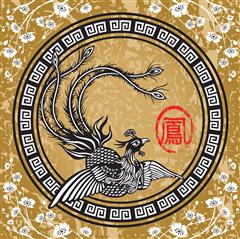 The Feng Shui Foundation Course is now available!
The Feng Shui Foundation Course is now available!


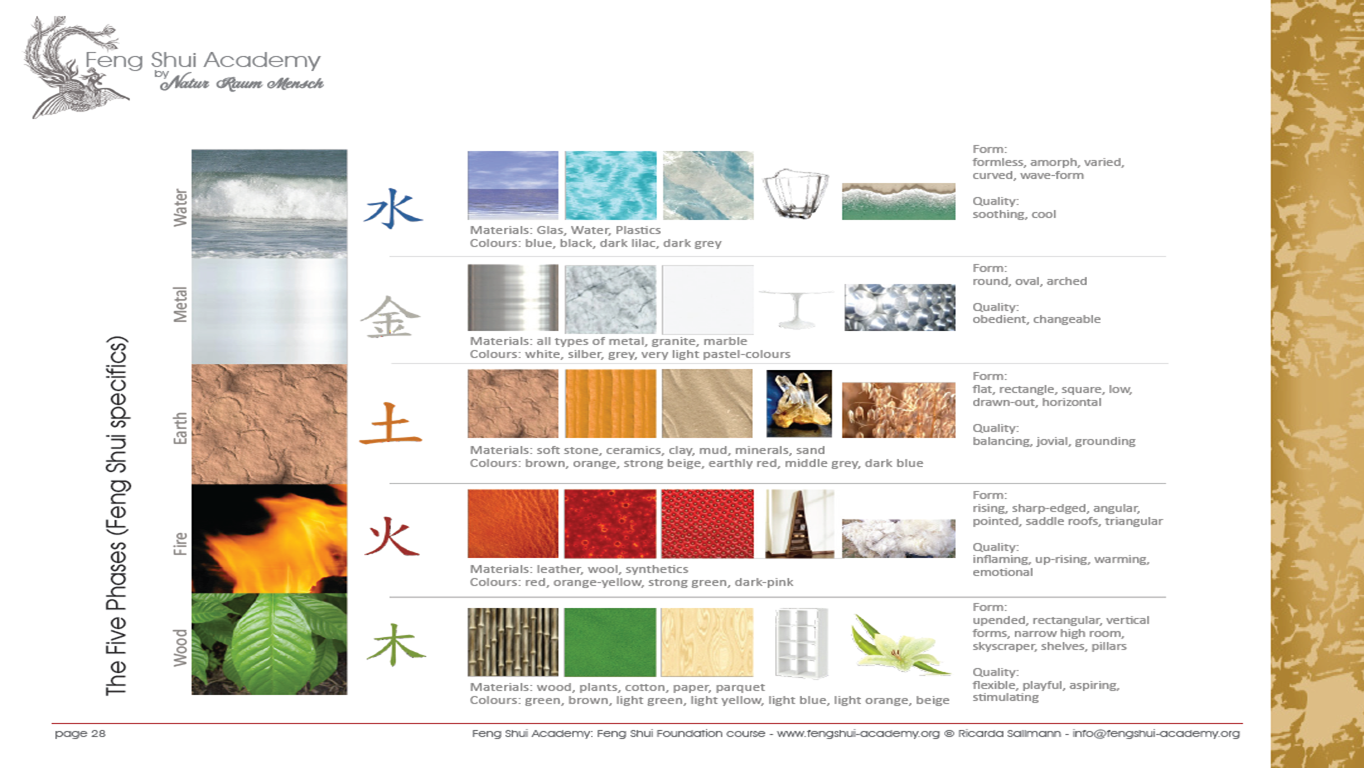



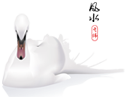

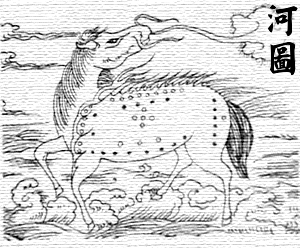 "He" in Chinese stands for River, more precisely in classical Chinese it not only stands for any river but for the Yellow River. "Tu" means to draw but also picture or pattern. From this we can translate "Hetu" as "River Pattern" or going back to classical chinese as "a pattern from the Yellow River".
"He" in Chinese stands for River, more precisely in classical Chinese it not only stands for any river but for the Yellow River. "Tu" means to draw but also picture or pattern. From this we can translate "Hetu" as "River Pattern" or going back to classical chinese as "a pattern from the Yellow River".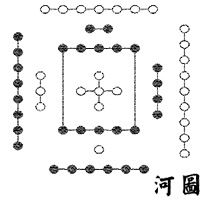
 "Luo" stands for the Luo River in China. "Shu" can be translated as book, to write, Chinese characters, calligraphy and record. In "Luoshu" a similar translation to "Hetu" makes sense: "Luo Pattern". The original translation would be closer to "a pattern from Luo River".
"Luo" stands for the Luo River in China. "Shu" can be translated as book, to write, Chinese characters, calligraphy and record. In "Luoshu" a similar translation to "Hetu" makes sense: "Luo Pattern". The original translation would be closer to "a pattern from Luo River".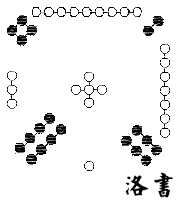
 This section is dedicated to articles on energy cleansing, fumigation and clearing methods. Smell and aromatherapy effect us human beings in different ways. They can be extremely helpful to not just clear out stagnant energies around us but to also lift and support our mood, whether for meditation, to calm a stressed out mind or to prepare for an action packed evening with friends...
This section is dedicated to articles on energy cleansing, fumigation and clearing methods. Smell and aromatherapy effect us human beings in different ways. They can be extremely helpful to not just clear out stagnant energies around us but to also lift and support our mood, whether for meditation, to calm a stressed out mind or to prepare for an action packed evening with friends...